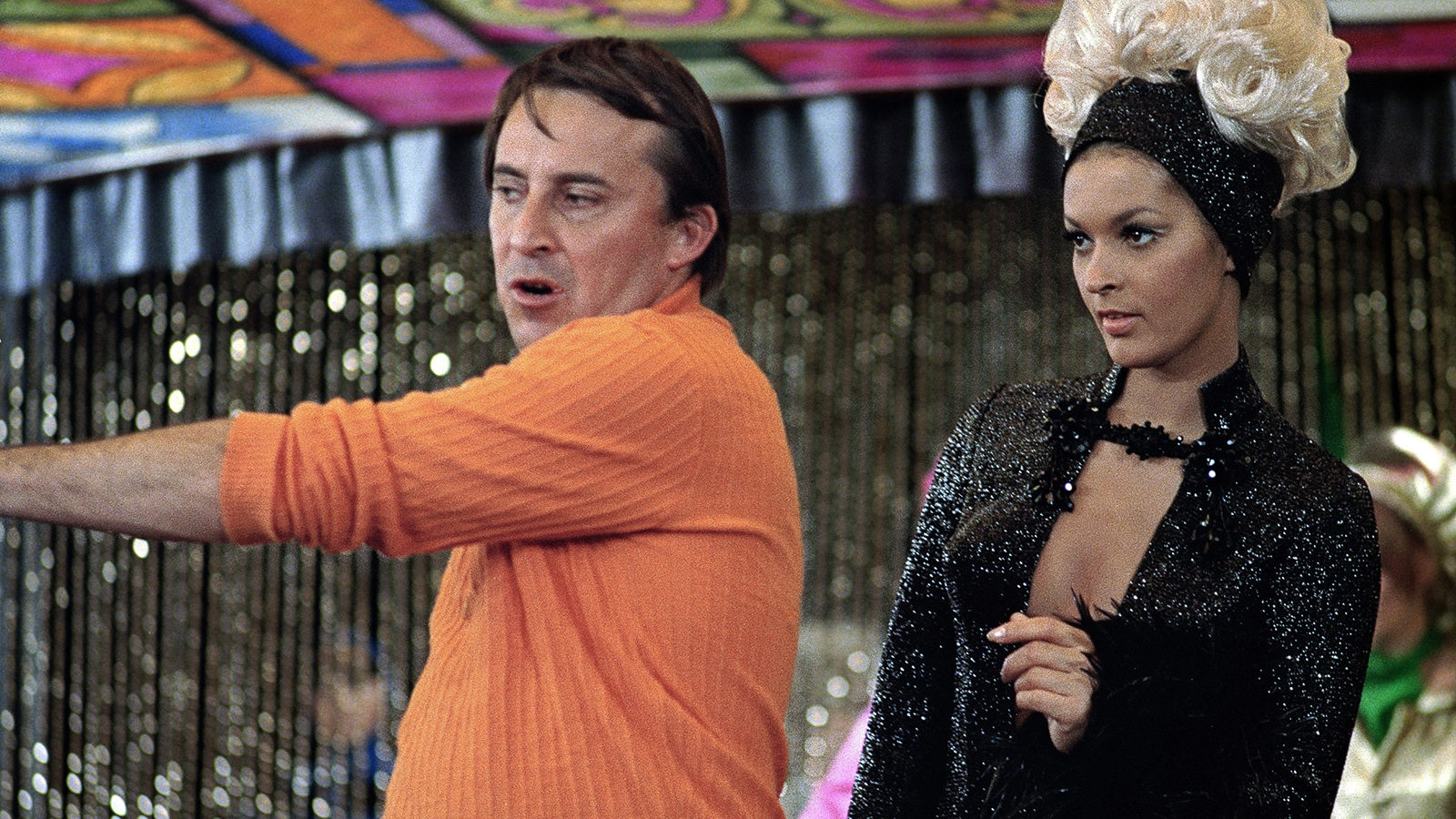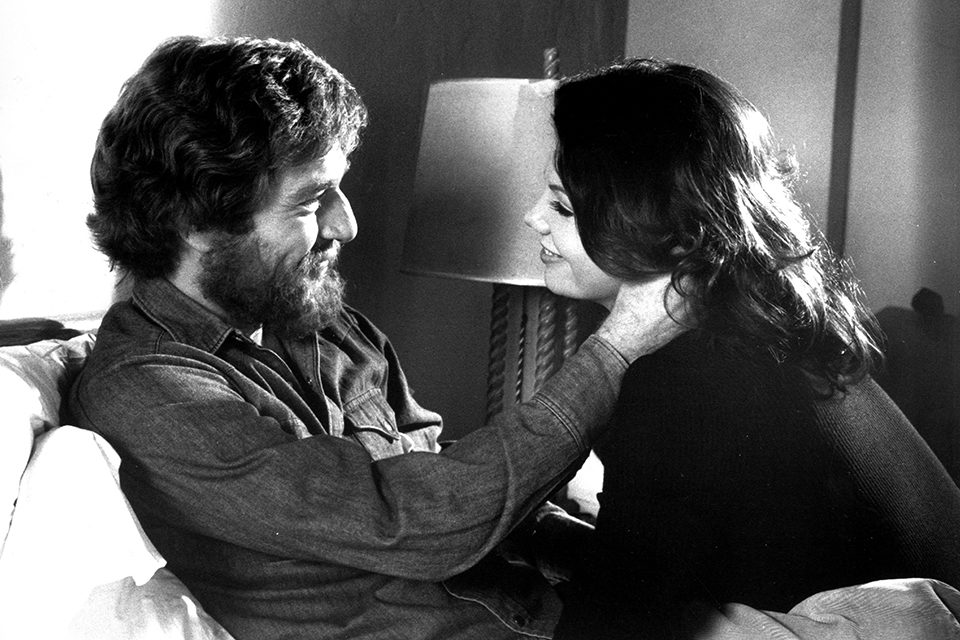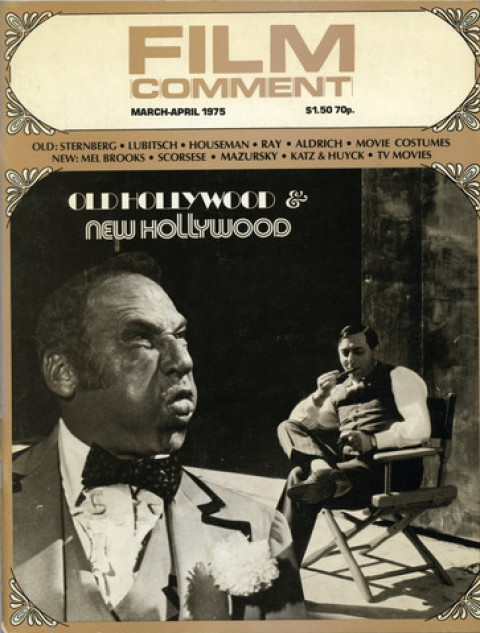
New Hollywood: Paul Mazursky
The American political system, which expanded in the late Sixties to the point where it almost cracked from excessive heat, is now contracting and consolidating. The Left has renounced righteous masochism for dextrous activism (“work within the System”), and has realized that the way to power, and thus change, is by proving, not its superiority to the electorate, but its similarity to it (“the system works”).
Hollywood, as ever the soft-focus image of America, has reflected this change. The heady era of easy riders and cute campus radicals gave way to the acid indigestion of ZABRISKIE POINT, BREWSTER MCCLOUD, ALEX IN WONDERLAND, and that aptly-named epitaph, THE LAST MOVIE: personal statements shouted into the void of viewer apathy. But having passed through a turbulent adolescence, during which the requisite dirty words were spoken and funny cigarettes smoked behind the woodshed, America’s most interesting filmmakers may be approaching the Hollywood equivalent of political maturity, whether sensible or eccentric. While Robert Altman and Richard Lester have recently muted their talent to outrage, and produced the oddly academic THIEVES LIKE us and JUGGERNAUT, Paul Mazursky keeps tugging away at the lunatic fringe of American comedy.
Except for the tentative happy endings, Mazursky’s career could serve as a paradigm of the New Hollywood: arrival of the poor boy from Brooklyn as the star of a low-budget independent feature (Kubrick’s first film, FEAR AND DESIRE); apprenticeship as actor (THE BLACKBOARD JUNGLE), revue performer (the Second City troupe), and TV gag writer (The Danny Kaye Show); modest success as a novice screenwriter (I LOVE YOU, ALICE B. TOKLAS); big hit about sexual life-styles (BOB & CAROL & TED & ALICE); narcissistic, post-linear flop (ALEX IN WONDERLAND); unemployment (two years); retrenchment and regeneration (BLUME IN LOVE); modest success as an established director (HARRY AND TONTO).
Mazursky even fits that moldiest of stereotypes, the Easterner who changes his name (from Irwin Mazursky!) and goes Hollywood. But with a difference. He seems to have realized that California is merely a sprawling suburb of Hollywood, and that the rest of the country has spent the past decade trying to “go California.” So he got inside Hollywood—and vice versa—the better to report, satirically but sympathetically, from the front lines. Mazursky has become that contradiction in terms, the liberal satirist: closer to an indulgent Horace than to a bitter Juvenal. He implicates himself in the general decay even as he falls in love with the would-be objects of his might-have-been scorn. Ignoring the satirist’s first rule (“keep your distance”), he instead embraces his loners and swingers, hustlers and chanters, as crazily wonderful characters whose idiosyncrasies are a precious natural resource.
In many respects, Mazursky is an updated model of those preeminent Hollywood satirists of the Fifties and early Sixties, Frank Tashlin and George Axelrod—but a Tashlin after years on the analyst’s couch, an Axelrod after the Esalen experience. His protagonists, like those of his mentors, are insecure, guilt-ridden, obsessive, middle-aged, middle-class males, seeking escape not into Tashlinian breast fixation or Axelrodian infidelity, but onto a level of self-awareness that accepts and forgives everything. In the end, their flights are grounded, and they ruefully accept matrimony the way Churchill accepted democracy: as the worst system, except for all the others.
Each Mazursky film ends in an image of escape, either from Chayefskian reality (ALICE B. TOKLAS) or into Fellini fantasy: the climactic cameraderie of 81/2 in BOB & CAROL and ALEX, the recognition of the sea as rejuvenating life force in BLUME IN LOVE and HARRY AND TONTO. These resolutions are rarely satisfying, because they don’t resolve anything; they Simply end successive chapters in Mazursky’s free-form autobiography, not with a bang but with a beatific “Oh wow!” He’s a little like one of the bit players in BLUME: a blissed-out, pansexual cutie who smiles and says “That’s okay” to everything from a broken date to a misfired orgasm. Having cauterized his victims, Mazursky also wants to give them final absolution.
Mazursky’s first three scripts were written with Larry Tucker (who had followed much the same journeyman’s road as his partner, including a Second City stint and some movie acting, as in Fuller’s SHOCK CORRIDOR), and in these films the appropriate Golden Age analogue was Preston Sturges. As authors, Mazursky and Tucker had the same kind of caustic fondness for their characters—all searching for ultimate answers in head-shop fortune cookies—as Sturges had for the fast-talking shysters and shills in his nonpareil rep company. As director, Mazursky allows plenty of room in which his own stock company of Beautiful People can wander: the middle-aged hippie waiter who looks into your soul as he describes the menu; the curly-haired teenager whose father freaked out in an Oregon commune (“I have to send him some bread every once in a while”); the with-it studio executive with visions of a heart-transplant love story; the Indian chief who explains his genuine healing powers with a modest “I like my work.”
But Mazursky’s spacious, even spaced-out mise-en-scène is the polar opposite of Sturges’ visual congestion. In this relaxed atmosphere, Mazursky’s actors are freer to put themselves into their characters, to collaborate in setting the film’s tempo, to see their director as a fellow adventurer instead of a dictator. You might call it “encounter filmmaking.” Whatever the mood may be on the set, it has helped Mazursky draw from Robert Culp, Dyan Cannon, Ellen Burstyn, George Segal, Kris Kristofferson, Marsha Mason, Art Carney, and Chief Dan George their finest movie performances. If Sturges sets in motion a determinist tornado that carries the actors willy-nilly, Mazursky lets his film float on a grass-scented California breeze.
Sturges’ influence can be seen in all three Mazursky-Tucker films (with TOKLAS’S Peter Sellers retreating, like THE LADY EVE’S Henry Fonda, from the seductive corruption of two different social worlds, and with the merry ménage-à-quatre of THE PALM BEACH STORY repeating itself with hip variations in BOB & CAROL), but most specifically in ALEX IN WONDERLAND. The schizophrenic ambivalence of Donald Sutherland’s Alex-should the successful young director sell out and make a commercial hit, or chance ruining his career with a personal project?—itself reflects the gap between 8 1/2 and SULLIVAN’S TRAVELS, the authors’ obvious sources of inspiration. It also reflects the ambivalences within the Fellini and Sturges films. Ultimately and fatally, ALEX opts for 8’12’S circus surrealism over its everyday ironies, and for SULLIVAN’S TRAVELS’ ambitiousness over its slices of apple-pie-in-the-face Americana.
For all ALEX’S acuity in defining the pretensions of Nouveau Hollywood, and its wry empathy with the struggling, loving couple played by Donald Sutherland and Ellen Burstyn, the film was nonetheless a critical and box-office failure. It ended the Mazursky-Tucker partnership, and was instrumental in reducing the MGM roar to a bankrupt purr. But perhaps Mazursky, and the American commercial film, had to get the worst of the European influence out of their systems, while retaining what was best: the recognition that movies should be made by people and not by committees. Certainly Mazursky benefited from the purging. His most interesting work lay ahead.

George Segal and Marsha Mason in Blume in Love (Paul Mazursky, 1973)
With BLUME IN LOVE, Mazursky took the hip moviemaker’s biggest risk: being romantic, even corny, about love. (It was also, of course, a risk the moguls could understand.) Lionel Trilling’s famous comment—that “Lolita is not about sex but about love… This makes it unique in my experience of contemporary novels”could be said to apply, on a less rarefied but no less intense level of achievement, to Mazursky’s film; for BLUME is about a man obsessively in love. About his ex-wife Nina, Blume says: “She’s the only woman I will ever love. Ever. I will die if I don’t get her back. I don’t want to die. Therefore, I have to get her back.” The rigidity of this syllogism is matched by the cunning of his desperation. Blume tries to tiptoe back into Nina’s life, but his soul squeaks pathetically. He’s a kind of cartoon werewolf—a cross between Droopy Dog and Loopy de Loup—who feeds as much on her obstinate rejection of him as on her sainted presence. No contemporary actor can touch George Segal for klutzy charm or a seriocomic capacity for suffering (he’s the Tom Ewell of the Seventies), and no film has used his manic copelessness as well as BLUME IN LOVE.
At first, Mazursky seems closer in spirit to Kris Kristofferson, who plays the minstrel-bum Nina takes under her social-worker’s wing as Blume’s successor. As the pattern of a moralistic Design for Living emerges from the strands of an interrupted marriage, Blume discovers that “I still loved Nina, but I liked Elmo, too.” But if Nina’s character verges on caricature—the blonde California wraith with translucent teeth who’s too stubborn to notice how much her ex-husband loves her, and the living embodiment of the contradictions within California liberalism—it’s because she exists not as a butt for Mazursky’s satire but as the focal point of Blume’s obsession. Mostly, we see Nina reflected in the double-vision of Blume’s star-crossed eyes.
Blume is not your average romantic hero. He rapes his ex-wife, listens through a keyhole while she talks to her analyst about him, and, when he has to fire his secretary (for sleeping with him), takes her to bed in order to cushion the blow—and still retains our sympathy. But Blume is very romantic, and so is BLUME. The Venice of your summertime dreams may be a trite romantic symbol, but it’s also a romantic city; and if it had not existed Mazursky could easily have invented it, as a floating stage on which to reunite his estranged lovers, as a Shangri-La of consummated love where even Tadzio and Aschenbach end up walking arm in arm into the Piazza San Marco. The Southern Cal mysticism of Mazursky’s endings is less forced here, so it hardly matters whether Nina’s unheralded appearance in the Piazza, nine months pregnant with Blume’s child, represents reality or fantasy—the fulfillment of Blume’s obsession or his final surrender to it. This ending, like those of LETTER FROM AN UNKNOWN WOMAN and AN AFFAIR TO REMEMBER, must be taken or rejected as a secular movie miracle. Cynics need not apply.
After the vagrant but visible narrative line of BLUME IN LOVE comes the episodic HARRY AND TONTO (which Mazursky wrote with his longtime friend, Josh Greenfeld). And after all the hints dropped in the earlier film about a Joycean odyssey (the names of Stephen Blume and his expected daughter Molly), one might wince at the prospect of Art Carney as the King Lear of Manhattan’s Upper West Side, who travels across America with way-stops at the homes of each of his three disappointing children. Mazursky, to his credit, doesn’t seem to takes these classical citations very seriously. Much more important are Old Harry’s references to Russ Columbo, Maurice Chevalier, Arthur Godfrey—touchstones of a gentler age to which Harry enjoys returning. Returning but not retreating: for Harry is a domesticated Zorba, with an unquenchable thirst for life in a world of social drinkers. “I know, life is confusing,” he tells his sapless elder son, “we’re just trying to get on with it.”
Of all Mazursky’s heroes, Harry is the only one who isn’t a tortured, middle-aged, vaguely Jewish, love-craving, sex-crazed lawyer or filmmaker. So for Mazursky HARRY AND TONTO seems like an itinerant vacation from his preoccupations. It’s full of incidental felicities that in fact function as the vertebrae of the film’s spine. As Harry keeps moving west (toward Hollywood) with his informal caravan of runaway youths, health-food peddlers, hundred-dollar whores, and a Sancho Panza tomcat named Tonto, it becomes clear that HARRY AND TONTO is a road picture: the road to an accessible Utopia, which is the one Mazursky has been traveling in each of his films. It’s probably just as well that the road keeps turning back on itself, and ends up not on the Via Veneto but on Sunset Boulevard; for in the hands of American Utopians like Paul Mazursky, Hollywood—not just the place, but the state of mind—survives.








